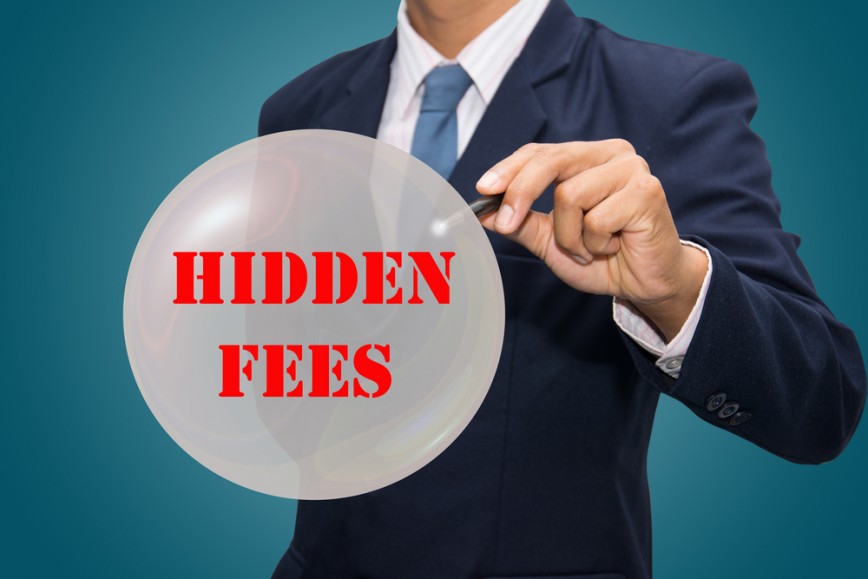So maybe you are in the process of searching for a home and you come across the property that you have always wanted. It’s just within your price range, perhaps a bit above what you had hoped, and you decide that if you cut some costs here and there, you will be able to afford it. However, there are additional costs to consider beyond the asking price, which should also be factored in when looking to buy.
The hidden costs of buying a house can be complex and not immediately recognizable to the untrained eye. Additionally, once the property is purchased maintenance can be expensive, and if you aren’t prepared for these costs, you may come away from the experience feeling as if the transaction was overwhelming, you are underfunded, and that you need to take on a second job. In order to prevent you from falling into this trap, here are the Top 10 cost considerations that you need to take into account.
- Appraisal Fees
Before you are able to actually buy the property, your mortgage lender will require you to have the property evaluated by a professional appraiser. Lenders use such appraisals when determining the amount of money to offer mortgage borrowers. In the past, costs were often included with the fees that borrowers paid at closing, however now appraisers want to be paid up front. This fee will usually cost between $350 and $450.
- Home Inspection
As discussed in the “Home Inspection Mistakes” section, not having the home properly inspected can be a blunder. To be sure, it is worth the extra money to hire a professional. Apart from being able to highlight parts of the home that are in need of repair, he or she can provide you with useful information that can be leveraged during the price negotiations. The cost of a home inspection is typically around a few hundred dollars.
- Pest Inspection
It is recommended by professionals that a homebuyer hire a pest inspector in order to ensure that the home is free from infestation. While there are no laws mandating this and some lenders do not require them, in the long run, it is usually for the best. If for some reason you buy a home and it is infested with termites, well that home is yours and there is generally no recourse. Termite inspections usually cost between $110 and $200.
- Closing
Closing costs can add up quickly and should be considered immediately when looking at the asking price of a home as they must be paid in order to qualify for the loan. These costs include underwriting fees, processing fees, survey fees, recording fees, and title insurance fees. While these can be a bit convoluted and difficult to follow, one way to hedge against these costs is to ask the lenders when you are shopping around for a loan for a “good faith estimate” that outlines your estimated closing costs in detail. While there is no guarantee that they will provide them, a good rule of thumb to follow is to estimate that the costs are typically 2-3% of your total mortgage.
- Property Taxes
This is something that many people forget to factor in when calculating their monthly payments, which can be very dangerous. To prevent against this, you should calculate your taxes in advance, which can usually be found on the MLS listing or provided by your agent, then divide by 12 and add that to your estimated monthly payments.
- Homeowners Insurance
Your insurance coverage will vary depending upon the condition of the property. How old is the house? How old is the heating, electrical, and plumbing? Also, your credit is considered a factor here, so what is your current FICA score? Do you live where there are floods, volcanos, tornados, or earthquakes? You will need to acquire hazard insurance if you do. The yearly costs of these insurance premiums will typically range between 0.5 to 1% of the mortgage loan amount.
- Moving expenses
Unless you have an army of children or friends helping you, you are probably going to need to hire professional assistance when it comes to packing everything up. These expenses can reach a few thousand dollars, especially if you are moving across country. However, some employers offer relocation assistance, which can help reduce this expense. Don’t forget to ask!
- The furnace and air-conditioning
While plenty of people will tell you that you should expect to get 20 years out of a furnace, the industry rule is to expect about 10 years. Also, it is important to consider efficiency, so instead of repairing an old furnace, it may make sense to simply replace it. The key is to make sure you know what type of furnace you will be getting when you buy a home.
- Furniture
If you are moving from an apartment to a home, it is quite likely that you will need to purchase new furniture to fully furnish your new home. These costs can add up, as a new bed, tables, and chairs can run in the hundreds if not the thousands of dollars.
- Repairs
Though some maintenance can be predictable, repairs are typically the most expensive part of owning your own home. The unexpected repairs are some of the most painful, such as replacing the water heater, loose tiles in the bathroom, removing dead trees; the list is seemingly endless. The best thing to do is to set aside a part of your savings for such emergencies, as most real estate experts suggest saving 1-2% of your mortgage balance in an annual maintenance fund.







